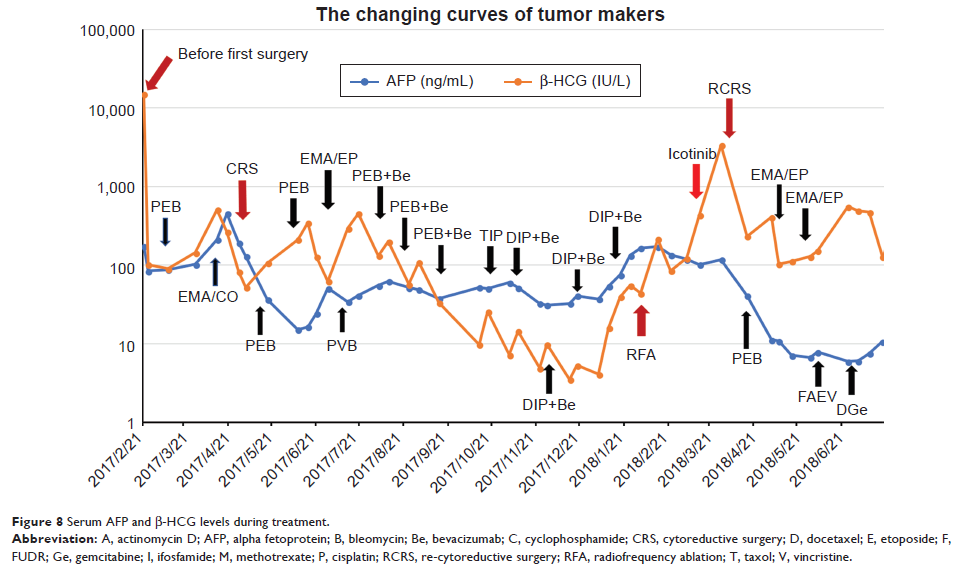108605
论文已发表
注册即可获取德孚的最新动态
IF 收录期刊
- 3.4 Breast Cancer (Dove Med Press)
- 3.2 Clin Epidemiol
- 2.6 Cancer Manag Res
- 2.9 Infect Drug Resist
- 3.7 Clin Interv Aging
- 5.1 Drug Des Dev Ther
- 3.1 Int J Chronic Obstr
- 6.6 Int J Nanomed
- 2.6 Int J Women's Health
- 2.9 Neuropsych Dis Treat
- 2.8 OncoTargets Ther
- 2.0 Patient Prefer Adher
- 2.2 Ther Clin Risk Manag
- 2.5 J Pain Res
- 3.0 Diabet Metab Synd Ob
- 3.2 Psychol Res Behav Ma
- 3.4 Nat Sci Sleep
- 1.8 Pharmgenomics Pers Med
- 2.0 Risk Manag Healthc Policy
- 4.1 J Inflamm Res
- 2.0 Int J Gen Med
- 3.4 J Hepatocell Carcinoma
- 3.0 J Asthma Allergy
- 2.2 Clin Cosmet Investig Dermatol
- 2.4 J Multidiscip Healthc

恶性混合性卵巢生殖细胞肿瘤由未成熟畸胎瘤、卵黄囊肿瘤和携带 EGFR 突变的胚胎癌组成: 一份病例报告
Authors Wang Y, Yang JX, Yu M, Cao DY, Shen K
Received 11 June 2018
Accepted for publication 3 September 2018
Published 12 October 2018 Volume 2018:11 Pages 6853—6862
DOI https://doi.org/10.2147/OTT.S176854
Checked for plagiarism Yes
Review by Single-blind
Peer reviewers approved by Dr Colin Mak
Peer reviewer comments 3
Editor who approved publication: Dr Yao Dai
Abstract: Malignant mixed ovarian germ cell tumors are very rare, accounting
for ~5.3% of all malignant ovarian germ cell tumors (MOGCTs), with a very high
degree of malignancy. The treatment of patients with persistent, refractory, or
platinum-resistant MOGCT is not well defined. The objective of this case report
was to analyze the importance of chemotherapy, salvage surgery and target
therapy in the treatment of a patient with refractory OGCT after first-line
chemotherapy failure. We reported a 34 year-old woman suffered from advanced
refractory MOGCT after first-line chemotherapy, cytoreductive surgery, and a
series of chemotherapy. The genetic test shows she is a carrier of EGFR:
p.L858R mutation. Based on genetic testing result, she received icotinib which
targeted for EGFR mutation, but the tumor progressed. After a secondary
cytoreductive surgery, she exhibited a partial response and continued to
receive chemotherapy. This suggests that salvage surgery may be considered for
patients with persistent or refractory MOGCTs when no effective systemic
treatment option is available. Targeted therapies based on gene sequencing may
provide a new option; however, its efficacy and related resistance mechanisms
still need to be verified by further study.
Keywords: mixed ovarian germ cell tumor, next-generation sequencing, EGFR
mutation, target therapy, salvage surgery
